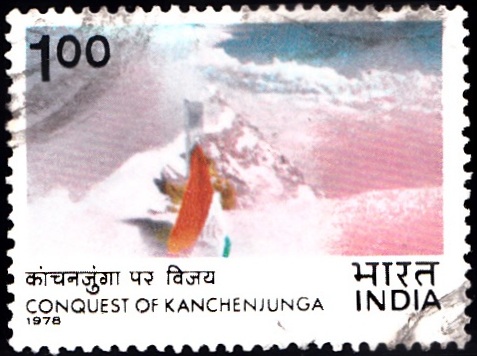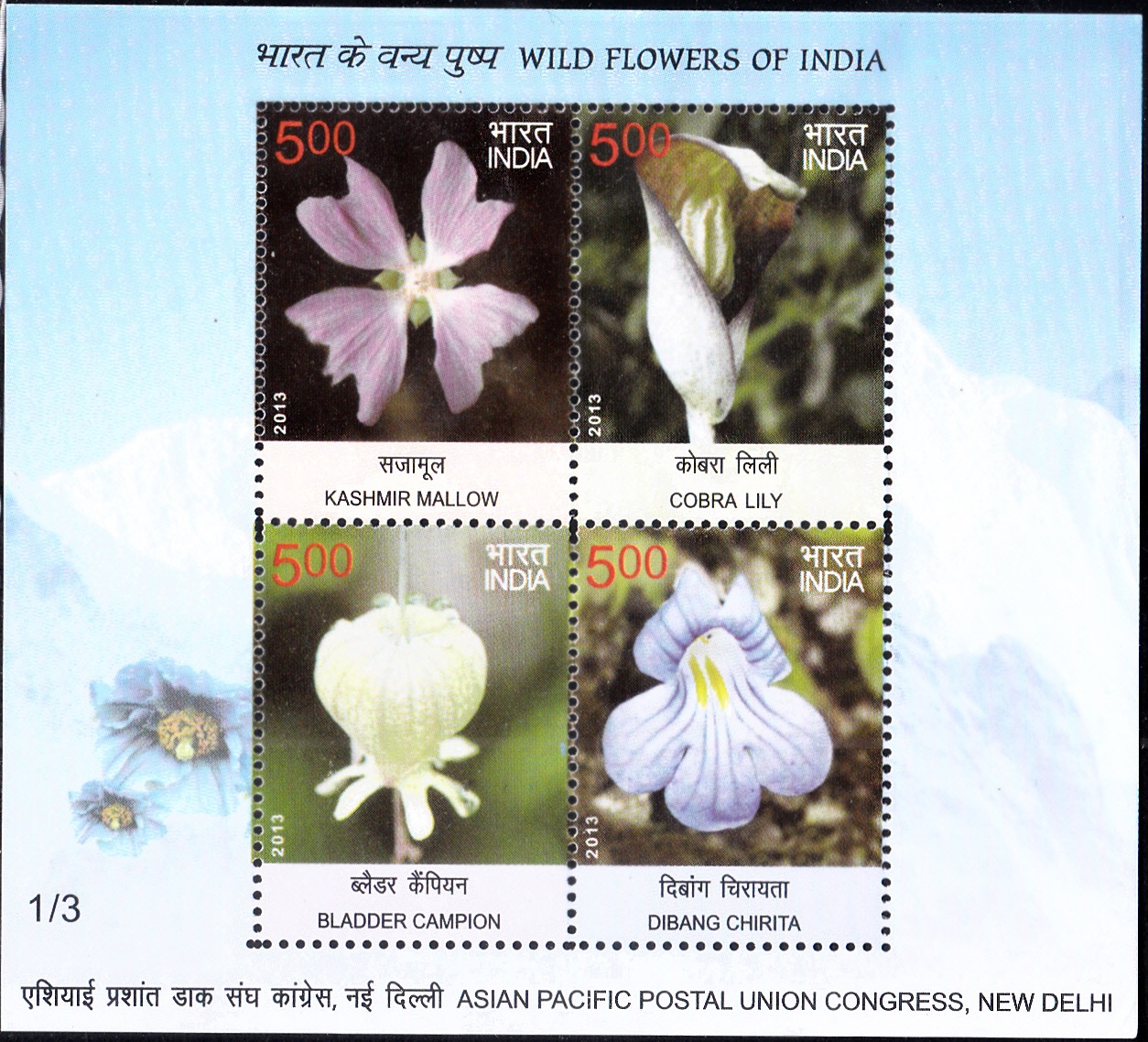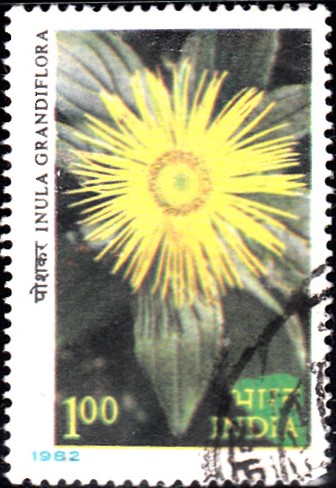
Indian Himalayan Peaks
Complete Set of 4 nos of commemorative postage stamps on Himalayan Peaks : Broad Peak (8,047 m), K2 (8,611 m), Kangchenjunga (8,586 m) and Nanda Devi (7,816 m) :
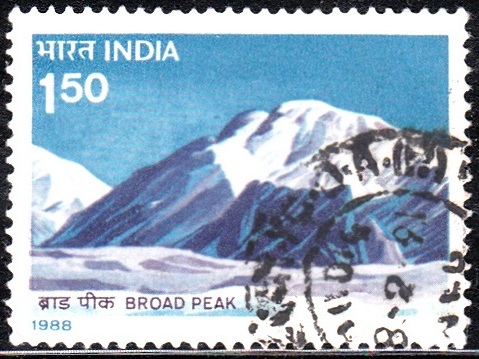
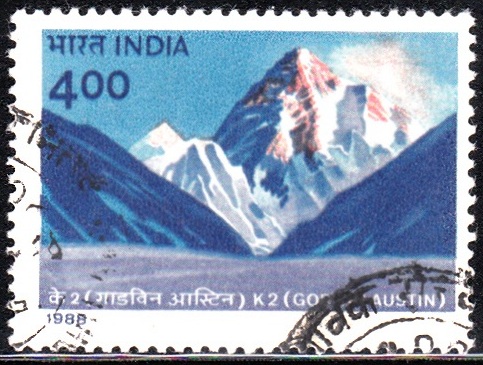
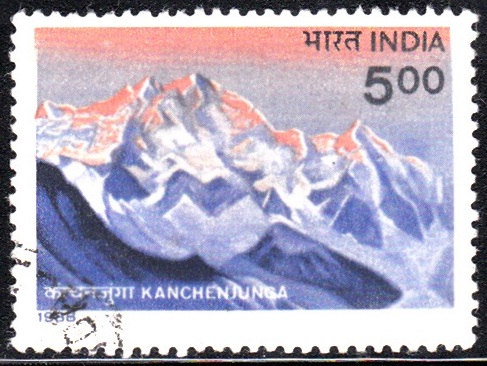
 Issued by India
Issued by India
Issued on May 19, 1988
Issued for : The Department of Posts is happy to issue a set of stamps on four Himalayan peaks. K-2 (Godwin Austen) in the Karakorams at 28,251 ft., the second highest peak in the world was scaled in 1954 by Italians under Ardito Desio. The Kanchenjunga (28,208 ft.) the world’s third highest peak was conquered by a British expedition led by Charles Evans who halted within a stone’s throw from the peak in deference to the local religious sentiments. The Nanda Devi (25,646 ft.) was climbed by Bill Tilman and N.E. Odell in 1936. The Broad Peak (26,400 ft.), also in the Karakorams, was scaled in 1957. The Kanchenjunga and the Nanda Devi have also been scaled by Indian expeditions.
Description of Designs : The stamps depict K-2 (Godwin Austen), Kanchenjunga, Nanda Devi and Broad Peak. Shri R.N. Pasricha‘s paintings on the K-2 and the Broad Peak are the basis of two of the stamp designs. Nicholas Roerich‘s painting on the Kanchenjunga was received from Shri Rajeshwar Dayal. The Nanda Devi stamp is based on a photograph by Mandip Singh Soin. The first day cover depicts the introductory lines describing the Himalayas taken from Kalidasa’s ‘Kumarasambhavam’, and the cancellation shows a line drawing of a peak both prepared by Smt. Nenu Gupta.
Type : Stamps, Postal Used
Colour : (150) Two colour, rest in multi colour
Denomination : 150, 400, 500, 650 Paise
Overall size : 3.91 X 2.90 cms.
Printing size : 3.55 X 2.54 cms.
Perforation : 13 x 13
Paper : Imported unwater marked P.G. matt coated stamp paper
Number Printed : 15,00,000 each
Number per issue sheet : 35
Printing Process : Photogravure
Printed : India Security Press
About :
- The heart of the Asian land mass, the lofty Himalayas have been called “Manadanda“, a measure of the earth, by Kalidasa in his ‘Kumarasambhavam‘. The Himalayas have shaped the movement and destinies of races in and around Asia. These mountains, which are the sources of the four great rivers of the sub-continent – the Ganges, Brahmaputra, Sutlej and Indus, have provoked man’s imagination, his spiritual quest and his adventurous spirit. The Himalayas have become an expression of divinity and spiritual ascent. This symbol has penetrated deep into the psyche not only of Indians but of the entire subcontinent.
- This has been the abode of Siva, ascetic and meditating, and his consort Parvati, the daughter of the Himalayas. The temple architecture of the Hindus and the Buddhist stupas with their tall pyramidical “shikharas“ and massive domes reflect the Himalayan peaks. The Ellora temples and the Kailashnath temple, Kanchipuram, were some of the earliest attempts to create the prototype of the Himalayas in sculpted stone. The snow-fed lakes and rivers were reflected in the temple tanks and the caves in the deep sanctum sanctorum. It was not merely the mountains but a whole ethos that was sought to be recreated in the plains. E.B. Havell in his book gives a detailed study of the psychological and primordial attachment to “The Himalayas in Indian Art“.
- These peaks have stood in almost unattainable solitude tempting the pilgrim, the spiritual seeker, as is evident from the number of monasteries, and the hiker and trekker the world over. Today they also attract the student of natural history as at the Kanchenjunga National Park and the Nanda Devi Biosphere Reserve.





